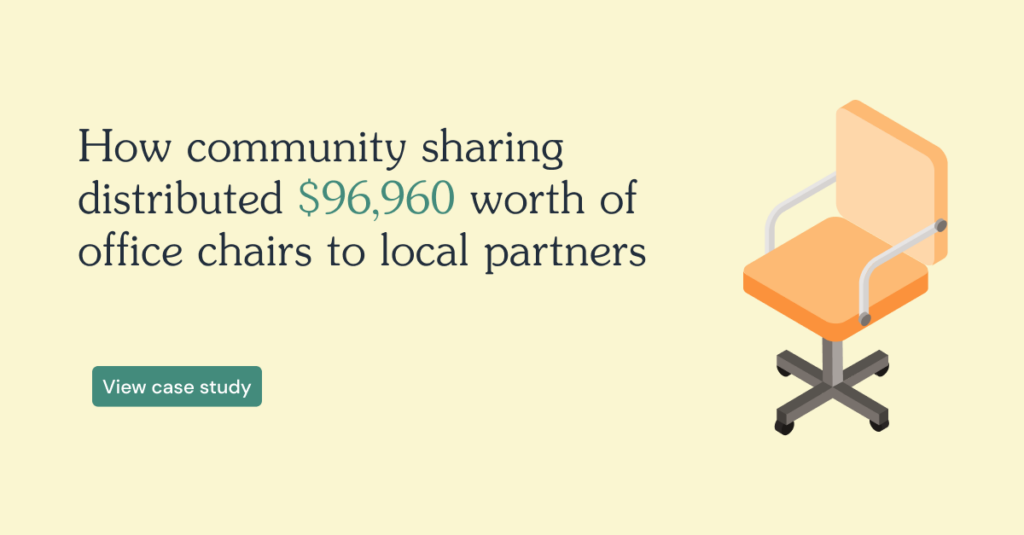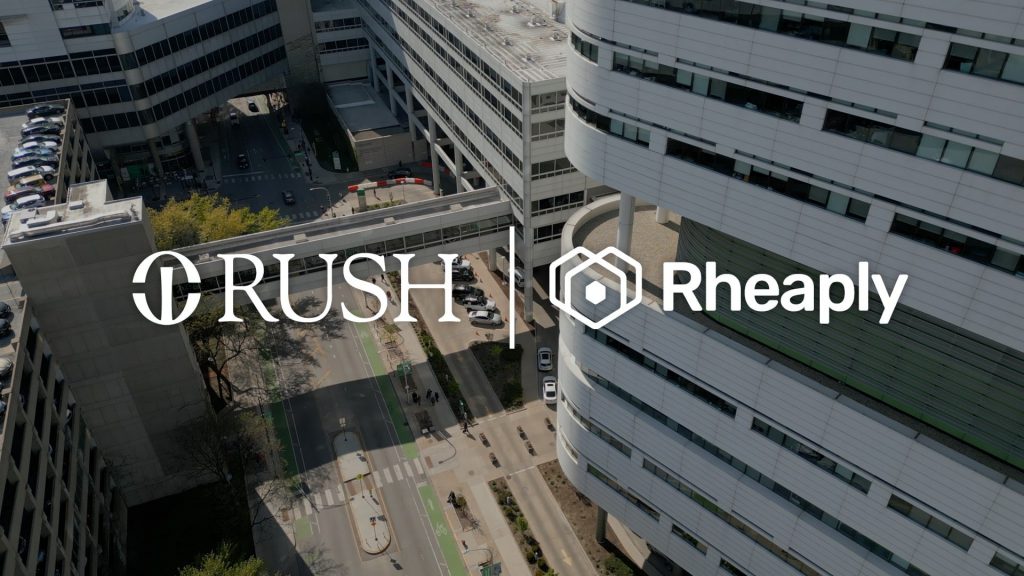Green Cities
Rheaply Public makes cities the epicenter for sustainable reuse.
Green Cities
The development of green cities has had numerous positive impacts on the environment, economy, and society. They’re playing an increasingly critical role in today’s world as business leaders and land developers work together to find sustainable solutions to combat climate change.
But what is a green city? A green city is an urban area that focuses on minimizing the use of non-renewable resources, reducing greenhouse gas emissions, promoting biodiversity, and fostering a healthy, equitable environment for all residents. Green cities strive to create a balance between the built environment and the natural world by incorporating green spaces and renewable energy sources.
Green cities prioritize sustainable development by integrating various aspects of environmental stewardship and economic growth. They often feature innovative infrastructure, such as green roofs, rainwater harvesting systems, and energy-efficient buildings. They also promote sustainable practices like recycling and water conservation.
Green city examples can be found all around the world, with several cities leading the way in implementing sustainable urban design principles. These cities have successfully demonstrated the benefits of green urban development, which include improved air and water quality, enhanced biodiversity, increased access to green spaces, and greater resilience to the impacts of climate change.
Cities like these are important because they address many of the environmental and economic challenges of the modern age. As urban populations continue to grow, cities must find ways to accommodate residents while minimizing their impact on the environment. Green smart cities do this by leveraging technology and data-driven solutions to optimize resource use.
Another key benefit of green cities is that they foster social equity by ensuring that all residents have access to essential services like clean water, affordable housing, and reliable public transportation. In this way, green cities serve as a model for the future of urban development and how, with the right tools and strategies, communities can work to promote sustainability across the board.
Green City Concept Principles
A green city is a concept that refers to urban centers that prioritize environmental sustainability, community development, and economic prosperity. Green cities are designed to reduce the carbon footprint and improve the quality of life for residents. To achieve these goals, there are several components of a green city that should be taken into consideration.
The green city theory emphasizes the importance of creating sustainable cities and communities that are designed to reduce the negative impact of urbanization on the environment. One of the key principles of the green city concept is the use of green spaces. These areas help to reduce urban heat islands, improve air quality, and provide natural habitats for wildlife.
In addition, green city concept principles include the importance of waste reduction and recycling. Cities that prioritize waste reduction and recycling programs can significantly reduce the amount of waste that ends up in landfills, which helps to reduce greenhouse gas emissions.
Green city planning ideas also involve the implementation of sustainable transportation such as bike lanes and pedestrian walkways. This approach reduces the number of cars on the road, which helps to reduce air pollution and greenhouse gas emissions. Further, green cities incorporate energy-efficient buildings that are designed to reduce energy consumption and carbon emissions.
Another important component of a green city is the use of renewable energy sources such as wind, solar, and hydroelectric power. These sources are clean and sustainable, and they help to reduce the dependence on fossil fuels.
Finally, green cities emphasize community development and engagement. This includes the creation of community gardens, farmers’ markets, and other initiatives that encourage sustainable living practices. Community engagement programs also help to build social capital and create a sense of community among residents.
Green Cities Examples
In recent years, there has been a growing interest in creating sustainable cities around the world. From Europe to Asia, Africa, and the Americas, there are numerous examples of green cities that prioritize environmental sustainability and improved community development.
Organizations like the Global Green City Index and the Sustainable Cities Index have compiled a list of the most sustainable cities in the world. A green cities list identifies cities that have made significant efforts to reduce their carbon footprint and promote sustainable development. Below are some examples of the most successful sustainable cities in the world:
- Copenhagen, Denmark: Copenhagen is frequently listed among the top green cities examples. The city has set a goal of becoming carbon-neutral by 2025, and it has made significant progress towards achieving that goal. Copenhagen is especially known for its extensive network of bike lanes, which has helped to reduce the number of cars on the road.
- Curitiba, Brazil: Curitiba is a city in southern Brazil that has become a model for sustainable urban development. The city has implemented a number of innovative policies, such as a bus rapid transit system that has reduced congestion and air pollution. Curitiba also has numerous parks and green spaces, which help to reduce the urban heat island effect and provide natural habitats for wildlife.
- Reykjavik, Iceland: Reykjavik, the capital of Iceland, is another city that is making significant efforts to reduce its carbon footprint. It has an abundant supply of geothermal energy, which it uses to heat buildings and provide electricity. The city also has bike lanes and pedestrian walkways, providing citizens with an alternative to driving.
- San Francisco, United States: San Francisco tops the US and Canada Index, driven by strong policies across all categories. Waste management is a particular strength. In 2009 San Francisco became the first US city to require that all residents and businesses separate waste and compost material from normal trash.
These are just a few sustainable cities examples that demonstrate how places around the world are making significant efforts to promote environmental sustainability. By implementing innovative policies and promoting sustainable living practices, these cities are showing that it is possible to create a more sustainable future for all.
How to make a Green City Project
Making a green city requires extensive planning, collaboration, and funding. Sustainability platforms like Rheaply play a critical role in helping cities learn how to make a green city project by providing expertise and support to local governments and organizations. These firms offer services such as waste reduction and recycling programs, energy efficiency strategies, and green infrastructure planning.
One key aspect of creating a green city is the implementation of net zero strategies. These strategies involve designing buildings and infrastructure to be highly energy-efficient and rely on renewable energy sources such as solar and wind power. This helps to reduce greenhouse gas emissions and move towards a more sustainable future.
To come up with a green city project, there are several steps that should be followed. The first step is to identify the characteristics of a sustainable city and develop a vision for what the city should look like in the future. Factors that should be considered include transportation, energy, waste management, and green spaces.
Next, it’s important to research and identify green urban initiative examples from other cities around the world. This can provide inspiration and help to identify best practices that can be adapted to the local context. Once a vision and best practices have been identified, engage with stakeholders and form a green cities initiative team. This team should include representatives from local government, businesses, and community organizations.
The next step is to develop a comprehensive plan that outlines the goals, strategies, and timeline for the green city project. This plan should include details on how to finance the project, including potential funding sources such as grants, public-private partnerships, and crowdfunding.
Finally, it is important to implement the green city project and monitor progress over time. This involves ongoing collaboration between stakeholders, regular monitoring of key performance indicators, and making adjustments as needed to ensure that the project is achieving its goals. It can also be helpful to model your efforts after a sustainable city example to ensure success.
Green Cities of the Future
Exploring green building and the future of construction is key to creating improved, sustainable cities. The construction industry has a significant impact on the environment, and there is a growing need for more sustainable and eco-friendly building practices.
Going forward, sustainable cities are likely to prioritize green building practices such as the use of renewable energy sources, energy-efficient building materials, and green infrastructure. This will involve a shift towards circular construction processes that center on the reuse and recycling of materials.
Green cities of the future will also incorporate smart technologies that help to reduce energy consumption and promote sustainable living practices. For example, buildings will use sensors and automation systems that can optimize energy usage, and the implementation of smart transportation systems will reduce reliance on cars.
Green city properties will also prioritize the use of green spaces and green infrastructure. This includes the development of urban gardens, green roofs, and rain gardens that help to reduce the urban heat island effect, provide natural habitats for wildlife, and improve air and water quality.
In addition to green building practices and smart technologies, green cities property management will be a key factor in creating sustainable cities for the future. Property managers will need to prioritize waste reduction and recycling programs, as well as energy and water efficiency measures to ensure sustainability.
Get started on Rheaply
Apply for a Rheaply Public account to gain access to your local reuse marketplace.
Is your organization already on Rheaply?
Log in with your work email and get started right away. Or, get a sneak peek by browsing available listings


